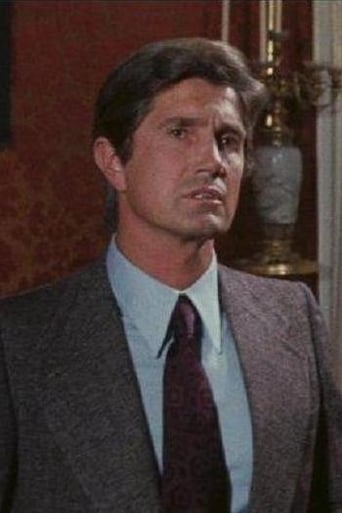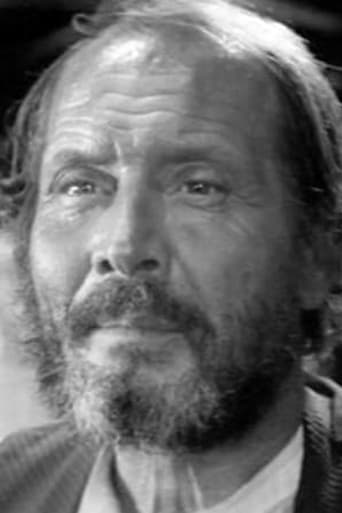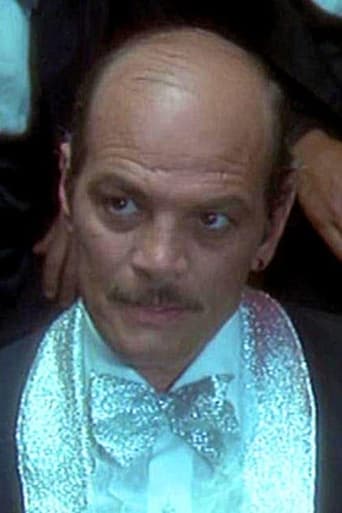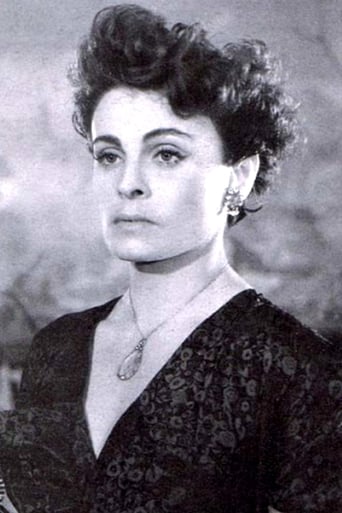Acensbart
Excellent but underrated film
Catangro
After playing with our expectations, this turns out to be a very different sort of film.
Tyreece Hulme
One of the best movies of the year! Incredible from the beginning to the end.
Mehdi Hoffman
There's a more than satisfactory amount of boom-boom in the movie's trim running time.
Wuchak
RELEASED IN 1966 and directed by Mario Bava, "Kill, Baby, Kill" takes place in a Carpathian village in 1907 where Dr. Paul Eswai (Giacomo Rossi-Stuart) arrives to perform an autopsy at the request of the inspector (Piero Lulli). The evidence points to the hamlet being cursed with a mysterious ghost girl that compels those who see her to kill themselves, which the doctor thinks is rubbish; at first anyway. Erika Blanc plays a visiting medical student who assists Eswai while Fabienne Dali appears as the village witch and Giovanna Galletti as a bitter baroness. Luciano Catenacci is on hand as the burgomaster (mayor) and the witch's lover.The movie has a colorful and haunting Gothic/Horror ambiance, which can be traced to earlier films like the B&W "The City of the Dead" (aka "Horror Hotel") (1960) and, more so, "The Terror" (1963), which was one of Francis Ford Coppola's early works, although he only directed part of it. Like those flicks, "Kill, Baby, Kill" features mysterious manors, dilapidated churches, ghosts, cobwebs, witches and bell towers in the mold of Hammer flicks of the era, such as the contemporaneous "Dracula, Prince of Darkness" (1966). As far as spooky MOOD goes, "Kill, Baby, Kill" is superb, but the story isn't as compelling as "The Terror," except for the last act. Nevertheless, the movie has influenced many artists and their works.Rossi-Stuart makes for a stalwart protagonist in the mold of James Bond (looks-wise) while Erika Blanc and Fabienne Dali work well on the other side of the gender spectrum, both striking in different ways.The title of the film is cheesy and recalls Russ Meyer's "Faster, Pussycat! Kill! Kill!" from the year before. It was obviously used to give the film a "hip" edge and sell as many tickets as possible. In 1971 it was retitled "Curse of the Living Dead" in the US, which was a 100% improvement. Here are several other sample titles that would be an upgrade, as well as more accurate: "Village of the Laughing Dead"; "Night of the Laughing Dead"; "Child of Vengeance"; "The Ghost at the Window"; "Child Cursed Village"; "Forgotten Daughter"; "Make them Pay"; "Sorceress' Regret"; "Melissa"; and "Melissa's Curse."Okay, now for a few joke titles: "Melissa and her Sissa"; "The Graps of Wrath"; "That Damn Ball" and "Ghost Boy in Drag." That last one is due to the fact that the ghost girl was played by a boy, one-shot actor Valerio Valeri.THE MOVIE RUNS 1 hour, 23 minutes and was shot entirely in Rome, Lazio, Italy. WRITERS: Romano Migliorini, Roberto Natale and Bava.GRADE: B
Bezenby
Giacomo Rossi-Stuart, the angry zombie harassing Vincent Price in The Last Man on Earth, finds himself harassed by a vengeful ghost child! If you have watched any Japanese horror film at all, you'll know that's the worst kind of vengeful ghost! Giacomo is a coroner who arrives in a creepy 19th Century Italian village to perform an autopsy on the corpse of a girl who has taken a dive onto a pitchfork. Strangely, the villagers don't want Giacomo to touch the body at all and even when he arrives there's a group of red-masked guys carting the coffin around so he can't get to it. But he does, anyway.With the help of Erika Blanc. Now Erica has been called in to help Giacomo, but she also was born in the village and has a mysterious past which no doubt has Giacomo helping himself to that era's version of Amatryptaline. It turns out that anyone who sees the ghostly apparition of Mellisa Graps is in for a horrible death.Mellisa is your regular ghost kid with a scary ball that bounces about everywhere and a tendency to look through windows at her hapless victims. She also must have been some sort of influence on Japanese horror films like The Grudge and Ring and all those other films, surely? I was going to say 'this is another good one from Bava' but when has he ever given us a bad one? This one is a sure contender for the crown of best Gothic Horror ever (rival is Terror Creatures From The Grave) - I'd only say that the end of this one isn't as good as the rest of it, but it's still full of Bava's twisted imagery, reflections, creepy dolls, tracking shots where you know something creepy is going to happen, and all that other stuff that makes these worth squinting at on a laptop.I'm tired. What's a burgermeister?
Dan Franzen (dfranzen70)
With a title like this, how can one take Kill, Baby...Kill seriously? By recalling that it's a Mario Bava movie. Bava had a prolific career as Italy's horrormeister, a progenitor of sorts of Dario Argento and Lucio Fulci. By 1966, Bava had made such minor classics as Black Sunday, Black Sabbath, and Planet of the Vampires. Bava's stylish movies weren't always Oscar material, but they sure looked good. Kill, Baby...Kill is no exception.In a small, secluded town in 18th century Europe, a Dr. Eswai (Giacomo Rossi-Stuart) arrives via coach. Like Renfield in Bram Stoker's Dracula, Eswai's coachman refuses to even enter the town, let alone get close to the castle where the doctor is to meet the local inspector (Piero Lulli). Eswai has been called by the inspector to conduct an autopsy on a possible murder victim. Trouble is, the townspeople don't want the good doctor to touch the body, even going so far as to try burying it and to attack Eswai as a warning.Why? Because they all feel that the town is under a terrible curse placed on them by a young girl who died a good twenty years earlier. Apparently, the girl died in plain view of an unhelpful citizenry, and now, through her sorceress mother, is avenging herself. Anyone who sees young Melissa is doomed to die a horrible death, usually at their own hands. So you can see how some may be a little skittish about letting Dr. Eswai cut the latest body open. Don't want to irritate the ghost, you know.The movie needed a romantic interest for Eswai, so enter nurse Monica (Erika Blanc), who was born and raised in the town but moved away at a young age - she's present just to check in on the graves of her parents, so she agrees to witness the autopsy, with the prodding of the inspector.As I noted, the movie is characteristically stylish, with an almost visceral feel to it. The blood is there, but it's less copious than it would be in later Bava movies, like Twitch of the Death Nerve. One shot I loved in particular appears to be of a diorama of the town's main passage. The camera swoops in, and then back out, and then in, and then out, and each time it's like walking into a 3D painting. The shot is meant to imitate the perspective of a child on a swing, and it's very effective. There's also a mind-bending scene in which the doctor pursues Monica, who's being carried away; no matter how quickly he moves, he never seems to gain on his target. It's a dizzying scene.Although there are some of the basic cornerstones of the genre - isolated town, superstitious villagers, a damsel in distress, a curse, ghosts - Bava's direction and cinematography (uncredited) mark this as a cut above your typical mid-1960s old-school horror feature. The conclusion may never really be in doubt, but the journey's an entertaining one.
grungy_guy
I bought a DVD set a while ago that had 13 supposed "cult classics", and overall was hugely disappointed, BUT this was one of the 3 films that I thought was interesting. It had a very intriguing mystery of a village that's supposedly cursed, with young women dying by accident. A coroner travels to the village to do an autopsy on a body, to see if it was an accident, or homicide, and in the end, finds himself in something bigger than he ever imagined.This was my first time watching a Mario Bava, and I can see why he has been praised countless times. The set of the whole movie was very beautiful, and eerie, with cobwebs everywhere, and a the village sort of resembling a labyrinth. I also realized a lot of red, and green lighting, giving off an evil sort of quality, which made you realize that there was something more than meets the eye. While the story was fascinating, I couldn't help get over the campy dialogue which kind of ruined for me, since I was hoping for a more serious tone. Not to mention that none of the characters seemed likable enough to hope for their survival. Overall though, a fun movie.ONE MORE THING: I couldn't help but notice that the ghost in this film looked just like the ghost in William Malone's Feardotcom (2002). She even had the SAME WHITE BALL, and there some scenes that involved that white ball bouncing around, JUST LIKE in KILL BABY KILL.....just saying....







